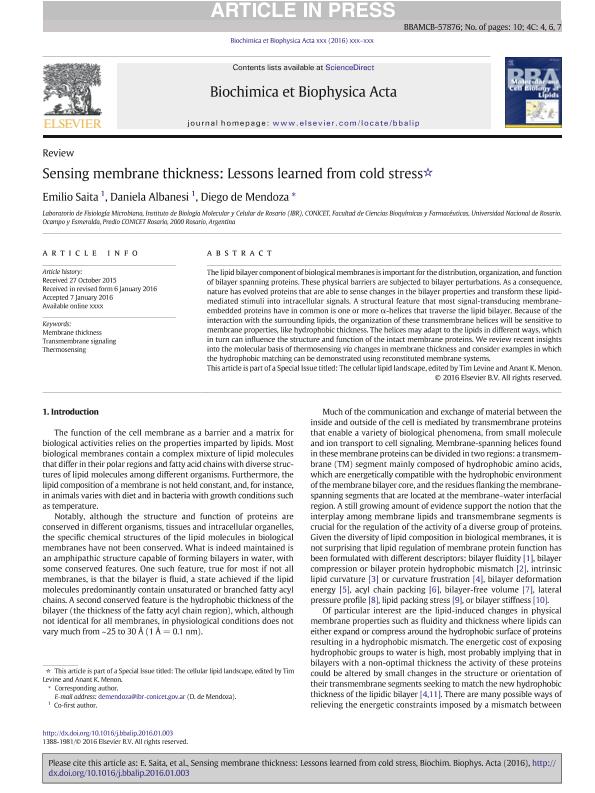Artículo
Sensing membrane thickness: Lessons learned from cold stress
Fecha de publicación:
08/2016
Editorial:
Elsevier Science
Revista:
Biochimica Et Biophysica Acta - Molecular and Cell Biology of Lipids
ISSN:
1388-1981
Idioma:
Inglés
Tipo de recurso:
Artículo publicado
Clasificación temática:
Resumen
The lipid bilayer component of biological membranes is important for the distribution, organization, and function of bilayer spanning proteins. These physical barriers are subjected to bilayer perturbations. As a consequence, nature has evolved proteins that are able to sense changes in the bilayer properties and transform these lipid-mediated stimuli into intracellular signals. A structural feature that most signal-transducing membrane-embedded proteins have in common is one or more α-helices that traverse the lipid bilayer. Because of the interaction with the surrounding lipids, the organization of these transmembrane helices will be sensitive to membrane properties, like hydrophobic thickness. The helices may adapt to the lipids in different ways, which in turn can influence the structure and function of the intact membrane proteins. We review recent insights into the molecular basis of thermosensing via changes in membrane thickness and consider examples in which the hydrophobic matching can be demonstrated using reconstituted membrane systems. This article is part of a Special Issue entitled: The cellular lipid landscape edited by Tim P. Levine and Anant K. Menon.
Palabras clave:
Membrane Thickness
,
Thermosensing
,
Transmembrane Signaling
Archivos asociados
Licencia
Identificadores
Colecciones
Articulos(IBR)
Articulos de INST.DE BIOLOGIA MOLECULAR Y CELULAR DE ROSARIO
Articulos de INST.DE BIOLOGIA MOLECULAR Y CELULAR DE ROSARIO
Citación
Saita, Emilio Adolfo; Albanesi, Daniela; de Mendoza, Diego; Sensing membrane thickness: Lessons learned from cold stress; Elsevier Science; Biochimica Et Biophysica Acta - Molecular and Cell Biology of Lipids; 1861; 8; 8-2016; 837-846
Compartir
Altmétricas




